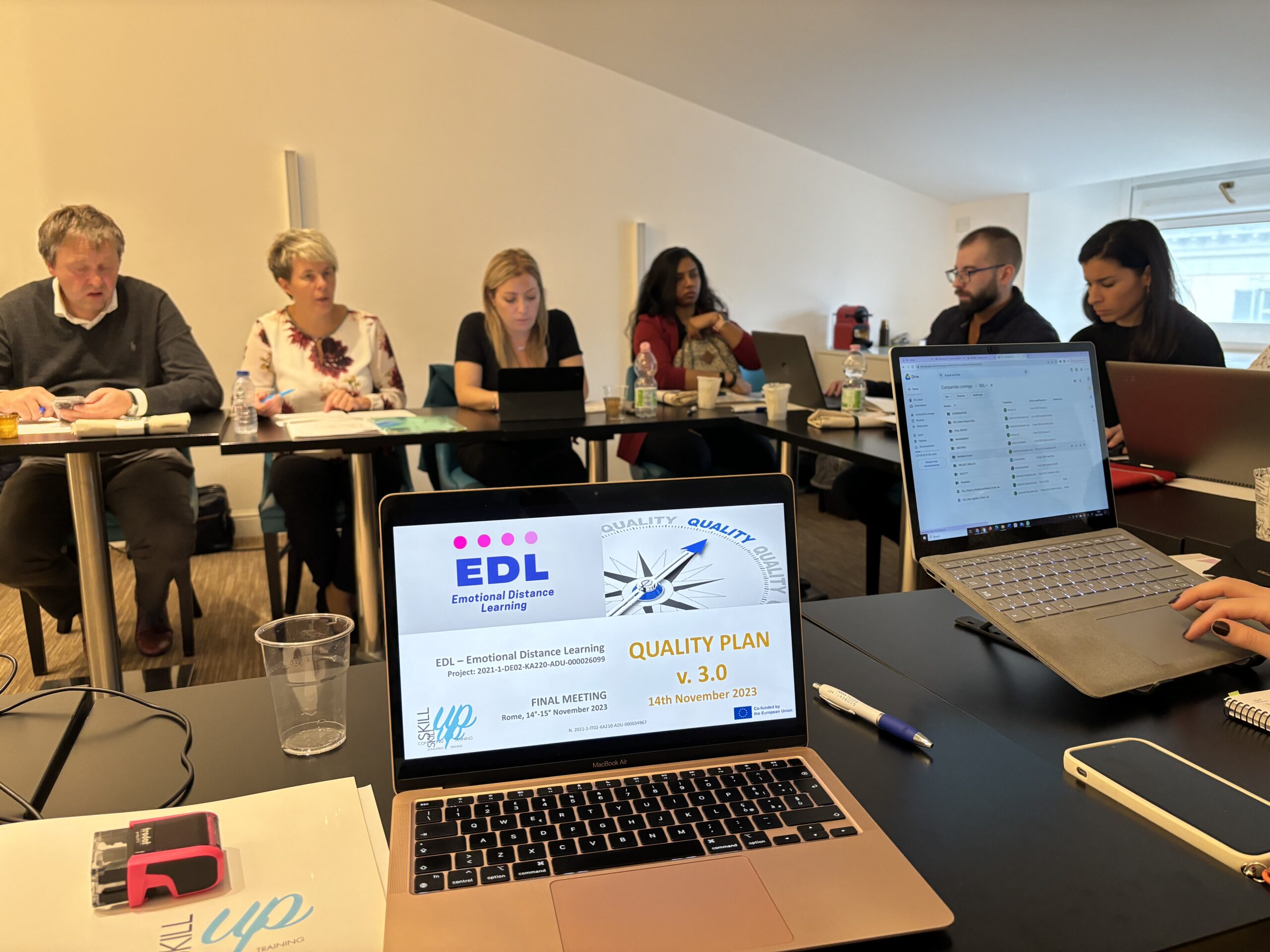By Jelena Zascerinska, Hochschule Wismar
Many researchers (Rimé, Bouchat, Paquot, & Giglio, 2020) agree that there are intrapersonal and interpersonal levels of emotions.
The intrapersonal level of emotions means the emotions an individual has inside him/herself. The intrapersonal level of emotions refers to the internal processes (Schwartz-Mette, Lawrence, Shankman, Fearey & Harrington, 2021). In turn, the interpersonal level of emotions reveals individual’s emotions experienced with other people, for example a teacher and other learners. The interpersonal level of emotions relates to the social perspective.
In Figure 1, you can see that the intrapersonal and interpersonal levels of emotions are separated from each other. Many scientists support this point of view, for example Messina, Calvo, Masaro, Ghedin, & Marogna (2021), Burkitt (2021).

Figure 1 creates the impression that your intrapersonal emotions do not depend on the emotions of other people and vice versa.
The EDL project helped us realise that emotions are relevant to the social activity (interpersonal level of emotions) and not to individual actions or operations (intrapersonal level of emotions) that realize it (Leont’ev, 1978). It means that individual’s emotions are not influenced by this individual’s own action but his/her emotions are affected by surrounding people. Figure 2 shows that interpersonal and intrapersonal levels of individual’s emotions are inter-connected.

Hence, individual’s emotions are the combination of interpersonal and intrapersonal levels of emotions. The interpersonal and intrapersonal emotions interact with each other and impact each other. The combination of individuals’ emotions impacted by the interaction of his/her emotions makes understanding of individual’s emotions more complicated.
Further on, this combination of individuals’ intrapersonal and interpersonal emotions and their interaction between themselves is the “mechanism” of the movement of social activity (Leont’ev, 1978). Consequently, individual’s emotions impact the movement of social activity or distance learning in the context of the EDL project. Conventionally, distance learning is implemented by a group of participants, namely teacher and other learners. Everyone of them has his/her own combination of intrapersonal and interpersonal emotions and their interaction. Now you can imagine how difficult it is for a teacher to understand learners’ emotions, to regulate learners’ emotions and predict the direction of the movement of distance learning. Also, it should be taken into consideration that distance learning is complicated by the combination of teacher’s intrapersonal and interpersonal emotions impacted by the interaction of his/her emotions as teachers are also influenced by the events taking place in the surrounding environment.
Implications for distance learning in adult education mean that everyone who takes part in distance learning has to learn how to take care of their own emotions. Teacher being the key actor in distance learning (Zascerinska, Aleksejeva, Zascerinskis, Gukovica, & Aleksejeva, 2020) has to update his/her competence in organising distance learning through a training course on a regular basis. Participation in a training could help teacher show his/her learners how to regulate their own emotions.
References
Burkitt, I. (2021). The Emotions in Cultural-Historical Activity Theory: Personality, Emotion and Motivation in Social Relations and Activity. Integr. psych. behave, 55, 797–820.
Leont’ev, A.N. (1978). Activity, Consciousness, and Personality. Prentice-Hall. 8 p., 1978. Retrieved from http://marxists.org/archive/leontev/works/1978/ch5b.htm
Messina, I., Calvo, V., Masaro, C., Ghedin, S., & Marogna, C. (2021). Interpersonal Emotion Regulation: From Research to Group Therapy. MINI REVIEW article Front. Psychol., 30 March 2021, Sec. Psychology for Clinical Settings, https://doi.org/10.3389/fpsyg.2021.636919
Rimé B, Bouchat P, Paquot L, & Giglio L. (2020). Intrapersonal, interpersonal, and social outcomes of the social sharing of emotion. Curr Opin Psychol. 2020 Feb;31:127-134. doi: https://doi.org/10.1016/j.copsyc.2019.08.024 . Epub 2019 Aug 30. PMID: 31590107.
Schwartz-Mette RA, Lawrence HR, Shankman J, Fearey E, & Harrington R. (2021). Intrapersonal Emotion Regulation Difficulties and Maladaptive Interpersonal Behavior in Adolescence. Res Child Adolesc Psychopathol. 2021 Jun;49(6):749-761. doi: https://doi.org/10.1007/s10802-020-00739-z . Epub 2021 Feb 5.
Zascerinska, J., Aleksejeva, L., Zascerinskis, M., Gukovica, O., & Aleksejeva, A. (2020). The Impact of COVID-19 on the Improvement of Teaching Skills on Problem-Solving Learning. International Journal for 21st Century Education (IJ21CE) Volumen 7, Número 1 (2020), pp. 42-59. DOI: 0.21071/ij21ce.v7i1.13074. https://www.uco.es/ucopress/ojs/index.php/ij21ce/article/view/13074/12073



0 Comments